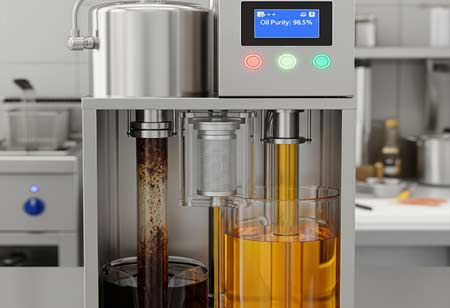THANK YOU FOR SUBSCRIBING
Be first to read the latest tech news, Industry Leader's Insights, and CIO interviews of medium and large enterprises exclusively from Food and Beverage Tech Review
Common Issues Impacting the Food Manufacturing Industry
Technology can either support or hinder the food and beverage industry. Outdated ERP systems are no longer sufficient to handle the sector’s increasingly complex demands.

By
Food and Beverages Tech Review | Wednesday, November 26, 2025
Stay ahead of the industry with exclusive feature stories on the top companies, expert insights and the latest news delivered straight to your inbox. Subscribe today.
Fremont, CA: The core challenges facing food and beverage manufacturers today remain similar to those they have long dealt with, but the context around these issues has changed significantly. Factors such as growing consumer demand for innovative products and transparency, rising quality and consistency pressures, tighter profit margins, emerging distribution channels, and a competitive labor market are all driving shifts in the industry landscape. As a result, food and beverage companies must embrace new strategies to effectively navigate these evolving market dynamics and contribute to the sector’s growth.
Here are some significant problems in food manufacturing companies:
Accessibility of Raw Materials
Farming products is an essential aspect of ongoing food handling workouts. Because of the infrequent availability of specific yields, the area experiences delays, resulting in limited inventories. For oil production, most oilseed manufacturers are small and insignificant ranchers with inadequate access to asset bases, such as composts, fertilizer, etc. As a result, the oilseeds grown by these ranchers have a low yield. Rabi crops such as wheat, grain, and mustard are sown in mid-November and harvested in April or May.
Transportation Issues
Proper packaging should be provided for food items to avoid breakages and injury during transit. Similarly, efficient transportation is crucial to preventing degradation—some foods do not last long, even when stored in climate-controlled environments.
Innovative Gear
In the Indian food preparation industry, we adhere to traditional production techniques in which human evaluators examine the nature of agricultural and food products. This manual evaluation is arduous, work-intensive, and prone to human error. To mitigate the impact of these shortcomings, an upgraded assessment of these things should be implemented.
Regulations
With increasing standards and laws for food production firms to follow, it is a daily challenge to remain consistent and deliver safe, reasonable, and dependable foods to customers. With several criteria, not all obvious, a real burden is placed on food production groups. Changes to these criteria usually necessitate prompt replies. Organizations must demonstrate consistency. The European Union defines the majority of food standards.
I agree We use cookies on this website to enhance your user experience. By clicking any link on this page you are giving your consent for us to set cookies. More info







